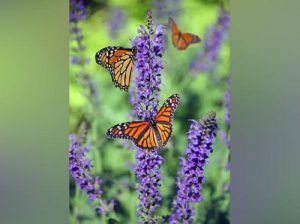
Researchers have discovered that inedible butterfly species that replicate one other’s colour patterns have developed similar flight habits to warn predators and avoid being eaten.
It is well known that many inedible butterfly species have evolved nearly identical colour patterns that serve as warning signals to predators, allowing the butterflies to avoid being eaten.
Researchers have now demonstrated that these butterflies have developed not only identical colour patterns but also comparable flight habits, resulting in a more effective warning signal to predators.The article is published in the journal Proceedings of the National Academy of Sciences (PNAS).
Using this dataset they investigated how the flight patterns of butterflies are related to factors such as habitat, wing shape, temperature and which colour pattern mimicry group the butterfly belongs to see which elements most heavily affected flight behaviour.
Although the species habitat and wing shape were expected to have the greatest influence on flight behaviour, the researchers found that in fact, the biggest determinant of flight behaviour was the colour pattern mimicry group a butterfly belonged to.
They also investigated a few species from the ithomiine butterfly tribe, which split from the Heliconiini about 70 million years ago, yet some of whom have very similar ‘Tiger’ colour patterns.




 Driving Naari Programme launched in Chandigarh
Driving Naari Programme launched in Chandigarh






























